Where is my listing?

Here is a question - why would a seller minimize the exposure of his items to the potential buyers? Is there a reason for a marketplace or a shopping comparison to do this? The obvious answer is - probably not. Then why do all they do this?
Every major site uses a combination of two browsing systems - search and navigation. The users usually use both in some combination. Normally, searching is the first action, followed up by series of refinements done through the navigation system. So, if I want to buy a TV, I would go to my favorite marketplace or a shopping comparison site, run a search query that would look something like "smart lcd tv" and as a second step I would further refine the initial results by using some filters to narrow down the results to my preferred TV brand or desired screen size.
Usually, the first action of the user is the search. The sellers will have little inside knowledge of how exactly the search engine of a specific marketplace works, what specific portion of their data gets indexed and where exactly their item will be placed in the search results for each specific term. It is clear that the item title is very important, so an utmost care is taken by the sellers to optimize the title for the potential buyers appeal as well as searchability. As far as the rest of the listing data is concerned, if time allows - the more the merrier.
Users second action is normally the navigation and this is where the things start to get slightly more complicated. In my example and real life, I use the navigational filters to narrow down the initial results of my search. Here I would like to raise a few points and clarify the impact of these points on the business performance of each seller and of the site as a whole.
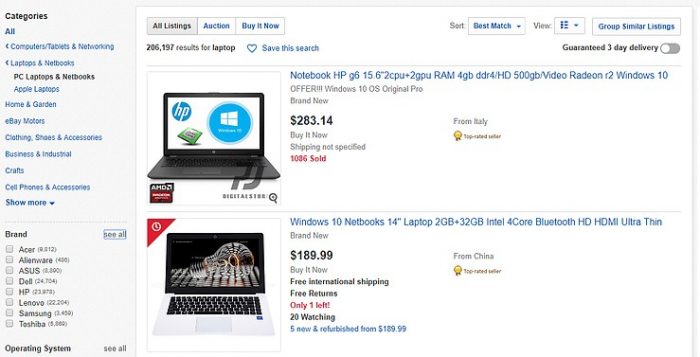
Search results for "Laptop on Ebay.com
How are these navigational filters populated?
These filters are populated in 2 possible ways.
One, by the seller directly from the tags he provided together with his listing - either through the feed or laborious fill up of the listing attributes (item specifics) one listing after another.
Two, by the marketplace through various listing post processing.
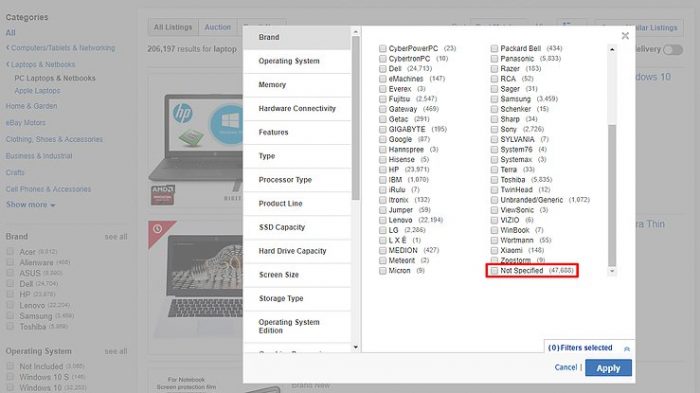
Brand filter for Laptops on Ebay.com. Out of 206K results 47K don't have a brand tag
Who is responsible to populate the filters?
The answer is - it depends. The first dependency is whether the site is structured or not. If the site is not structured i.e. allows insertion of listings without attaching them to any products in the catalog, the primary responsibility is on the seller. He is the one that is expected and responsible to provide a set of tags for each listing, that will be used by a marketplace or a shopping comparison site with the navigational attributes. If the site is structured then it splits again. If sellers' listing creates a new product on site - the initial responsibility is with the seller, if sellers' listing is matched to an existing product on site - its with the marketplace. Once the product on site is created, the seller usually does not have a control of its data and the marketplace or shopping comparison site, specifically its catalog team will take it from there.
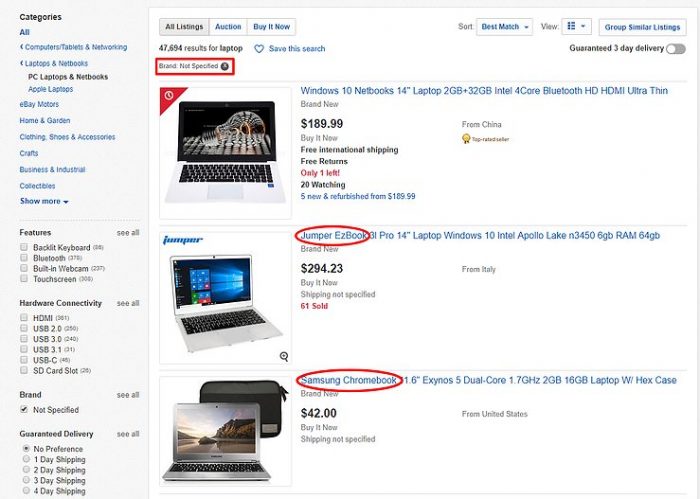
No tag does not mean no data. Branded listings without brand navigational tags
Do filters cover all the listings in the users search results?
Very simple - no. The search brings out the results that were indexed and triggered by the search query. Each one of these results is a listing that may or may not have relevant navigation tags associated with it. The order of the results has no indication regarding the tags. The results may be ordered by relevance, which each platform defines by itself and can be reordered in a number of ways, but normally this order has no relation to the navigational tags or a follow up process of filtering and navigation.
Its very easy to see the gap between the number of search results and the navigational attributes coverage. First, look at the total amount of the search results. Now look at the navigational filters, usually located on the left side of the screen. Normally, on the side of each specific value you will see a number which shows how many of the search results contain this value. So, if I was looking for a long sleeved T shirt, when looking at the search results, on the left hand navigation I will see a set of relevant attributes, e.g. color. Under the color attribute, I will see the values, specifically, how many of the T shirts result were white, red, black and so on. In the ideal world the total amount of values for each attribute should add up to the total amount of the search results. In reality, depending on the attribute, the coverage of navigational attributes will be anywhere between 90%+ for the obvious attributes like brand and single percentage digits on other attributes.
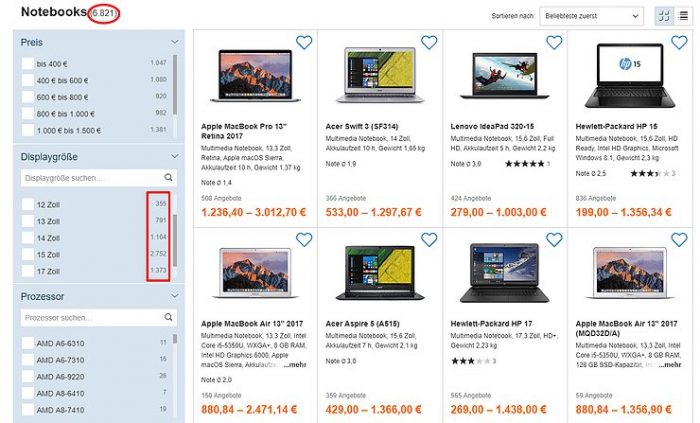
The total count of the results and the coverage of navigational attributes on idealo.de
What happens if a listing has no navigational tags?
If the listing is untagged it dramatically reduces the chances of the listing surfacing and subsequently reduces the overall conversion to sale. When the buyer starts to use the navigational filters, the only listings that will be displayed from now on are the listings that contain the tags and linked to the navigational filters. This is the critical part of the message. Considering the effort the seller invests into creating a proper listing on a marketplace - the title, the image gallery, the description and the technical spec - all of this great work will be worthless if no navigational tags were set. A waste of time and a loss of opportunity.
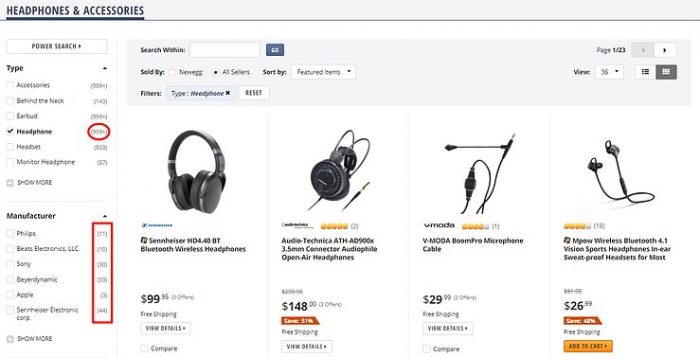
The gap between the total amount of listings and brand coverage
Is there an opportunity?
Yes indeed. While all sellers try to compete for the eyeballs of the buyer and try to be as high up on the search results as possible - there is a very simple way to stand out - ensure all possible navigational filters are set on the listing. By doing this the seller not only ensures that his listling will be visible when a buyer clicks on the filter, but also places himself ahead of the lazy competition that passed on the opportunity. If the result of the buyers' search query contains 1000 results - its hard to stand out, but if the result of a specific filter contains only 20 - it almost ensures the exposure of the listing. So if you are a seller - go ahead and close this gap, the opportunity is right there.



